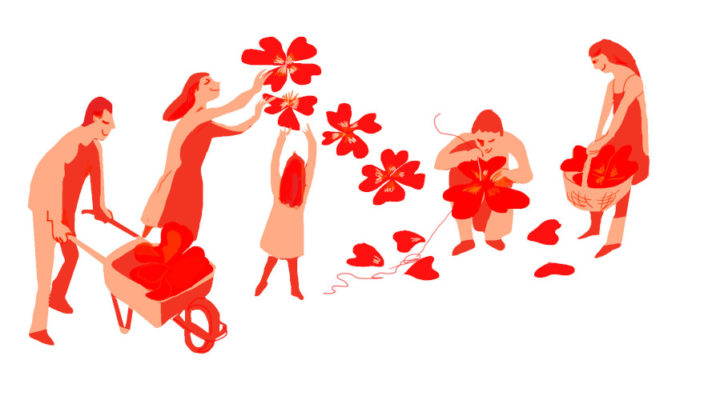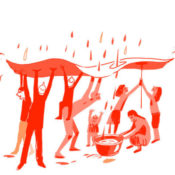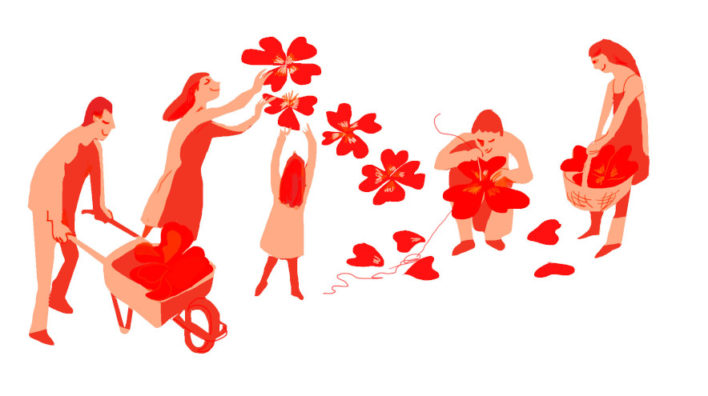Ambitious and Innovative Research Project

Drawing above: © Hélène Perdereau/ATD Fourth World
Editorial by Isabelle Pypaert-Perrin, Director General, ATD Fourth World

Around the world, people in extreme poverty are very brave and resourceful as they struggle to survive in extremely harsh conditions. Often, we don’t even see these people. They remain hidden from sight behind the wall that separates us from poverty. Yet, although locked away, they observe the world beyond that wall, and they wonder about things.
Not noticing people in extreme poverty, others rarely understand their perspective either. They do not appreciate all the wisdom people in poverty have gained from what they have been through. In fact, people in poverty know a lot about programs, policies, and community building initiatives. And what they understand is imperative for overcoming the challenges humanity faces today.
Putting partnership into practice
Joseph Wresinski, ATD’s founder, always said that people in extreme poverty are crucial partners. When considering the future, he insisted, their input is irreplaceable. Recently, ATD Fourth World put this idea into practice with our three year research project, The Hidden Dimensions of Poverty.
People experiencing poverty themselves played an important role in everything from the research design and implementation to analysing data. Their partnership in the rigorous methodology took place on an equal footing with the academics and other professionals.
As a result, the final report reflected many contributions from people in poverty. It concluded that poverty is defined by elements that go far beyond the simple issue of money or income. Unfortunately, programs and policies aimed at reducing poverty rarely take into account these non-monetary characteristics. As a result, they often fail to meet their objectives or provide effective support. In fact, they often push people deeper into poverty, isolating them further from mainstream society.
Hard work remains invisible
Our research describes the suffering that damages the bodies, minds, and souls of those struggling with poverty every day. It highlights obstacles to the eradication of poverty. In addition, the research underlines a central dilemma. Those living in poverty struggle every day, but marginalisation hides their efforts and hard work from view. Yet their failure to achieve what they want for their children haunts them day and night. “Will our children benefit from all our hard work?” a mother from the Democratic Republic of the Congo once asked me. “Or will they always live in the same poverty we do?”

To end the fundamental injustice of inequality, we must learn to look at poverty in all its dimensions. We also need to engage in dialogue and undertake activities with those who live in poverty. Only then will we be able to stand beside them to face the challenge of their lifetime: overcoming extreme poverty, both for themselves and for everyone else.
This editorial was originally published in the Letter to Friends Around the World #104 by the Forum on Overcoming Extreme Poverty.

